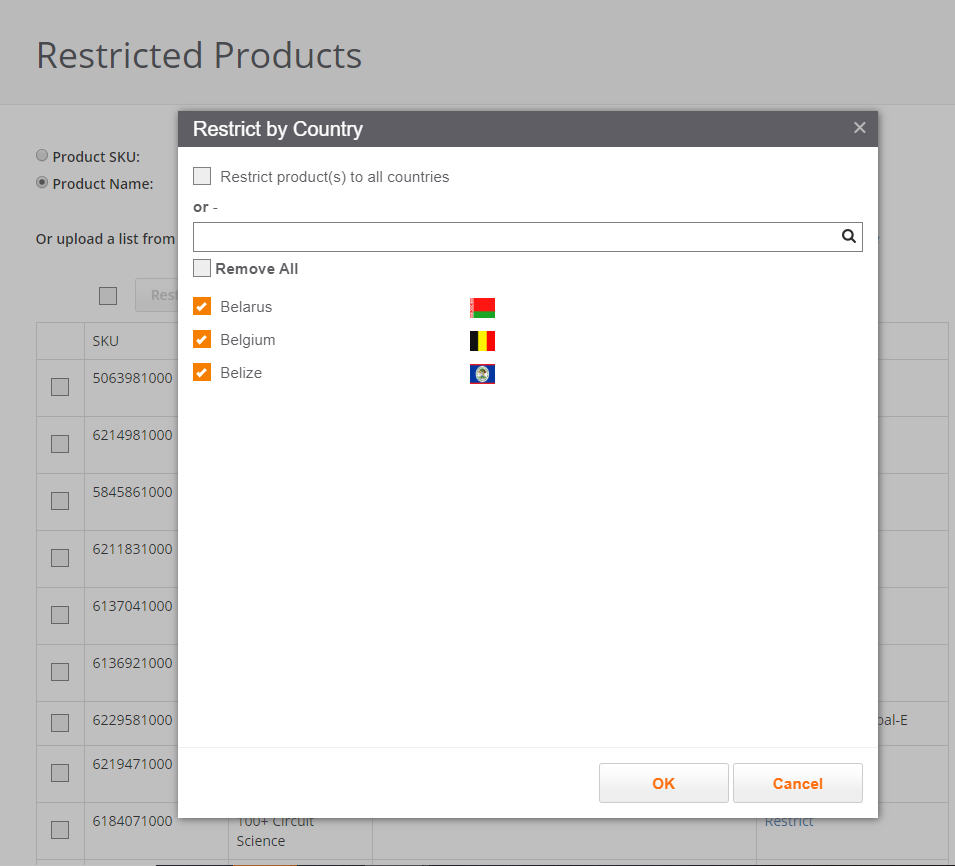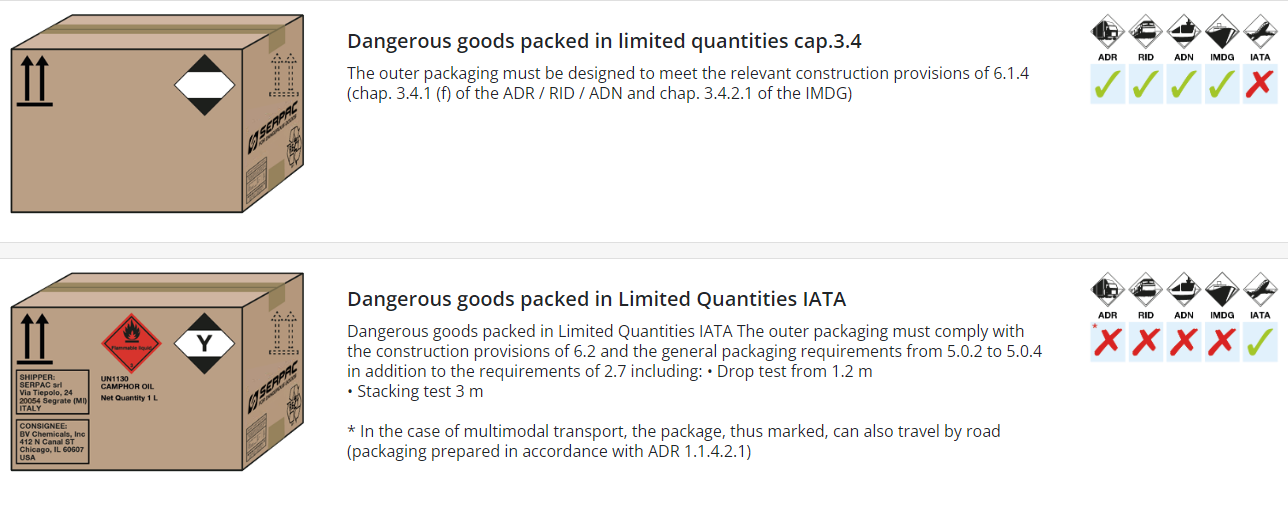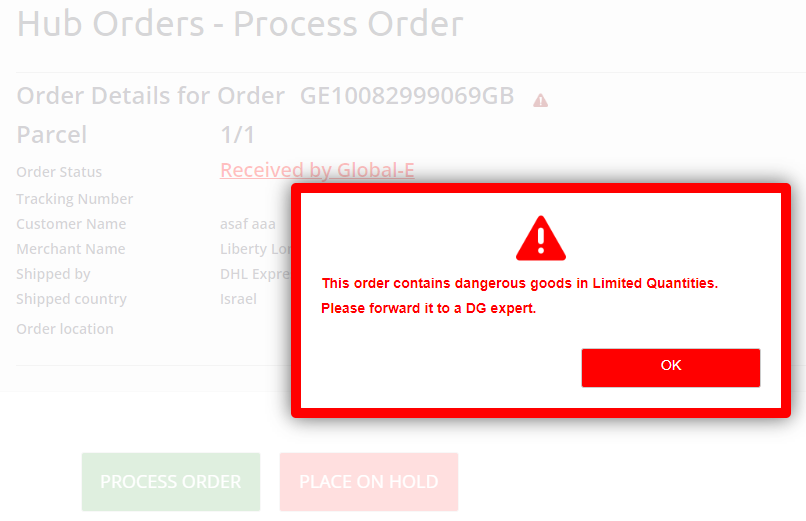Restricted Products
Restricted products are products that, due to commercial or regulatory issues, are forbidden or controlled in one or multiple countries,
There are two types of product restrictions: commercial and regulatory.
Commercial restrictions
Product restrictions due to commercial issues are based on reseller agreements and/or limitations. The Merchant usually initiates these restrictions at the product SKU level.
For example, a contract could stipulate that a product cannot be sold within a specific country. A specific model of Nike shoes cannot be sold in the United States.
Regulatory restrictions
Product restrictions due to regulatory issues are based on custom regulations in the destination country. Global‑e generally initiates these restrictions at the product, category, or sometimes at the universal Harmonized System (HS) codes level.
The Harmonized Commodity Description and Coding Systems (HS) is an international nomenclature for the classification of products. It allows participating countries to classify traded goods on a common basis for customs purposes. At the international level, the Harmonized System (HS) for classifying goods is a six-digit code system.
Examples:
Wooden products are regulated in Australia.
Sunglasses require an FDA permit in the US. Merchants that do not have the required FDA permit are not allowed to sell sunglasses to the US.
What is a Restricted Product and Why Should a Product be Restricted?
There are several categories of products that can be sold internationally.
Dangerous goods or hazardous materials: These products are prohibited; neither merchants nor Global‑e may sell them.
Dangerous goods are substances that pose a risk to health, safety, property, or the environment.
Hazardous materials contain substances that are radioactive, flammable, explosive, corrosive, oxidizing, asphyxiating, biohazardous, toxic, pathogenic, or allergenic. This also pertains to physical conditions such as compressed gases and liquids or hot materials, including all goods containing such materials or chemicals, or may have other characteristics that render them hazardous in specific circumstances.
For more information, see https://en.wikipedia.org/wiki/Dangerous_goods
Restricted products: A restricted product is a product that is not allowed or controlled in one or multiple countries, either due to commercial or regulatory issues. There are two types of restricted products, commercial and regulatory.
Restrictions Due to Commercial Issues
Product restrictions due to commercial issues are based on reseller agreements and/or limitations. The Merchant usually initiates these restrictions at the product SKU level.
For example, a contract could stipulate that a product cannot be sold within a specific country:
A specific model of Nike shoes cannot be sold in the United States.
Restrictions Due to Regulatory Issues
Product restrictions due to regulatory issues are based on custom regulations in the destination country. Global‑e generally initiates these restrictions at the product, category, or sometimes at the universal Harmonized System (HS) codes level.
The Harmonized Commodity Description and Coding Systems (HS) is an international nomenclature for the classification of products. It allows participating countries to classify traded goods on a common basis for customs purposes. At the international level, the Harmonized System (HS) for classifying goods is a six-digit code system.
For example:
Wooden products are regulated in Australia.
Sunglasses required an FDA permit in the US. Merchants that do not have the required FDA permit are not allowed to sell sunglasses to the US.
Restricting Products by Country
Product SKUs can be restricted for a single country, for several countries, or for all countries.
To restrict products by country, perform the following steps.
Removing or Modifying a Restriction
To remove or modify a restriction:
In the Restricted Product screen, find the relevant products from which you would like to remove or modify the restrictions.
In the column Restricted In, click the countries link.
Remove or modify as required.
You can select to clear and remove restricted countries from the list.
The restriction is removed for the specific products in these countries.
You can select Remove All to remove all restricted countries.
The restriction is removed for the specific products in all countries.
Click OK.
The selected countries are removed from the list and so is the product restriction for this country.
To remove or modify several products with the same restriction:
Select the relevant products.
Click Restrict Selected.
The Restrict by Country box is displayed.
Apply the required change.
You can restore countries that have been removed by adding them back
OR,
Add new countries, as detailed in the previous sections.

Restrict by Country - Removing or Modifying a Country
Some products may be restricted by Global‑e due to regulations. Contact Global‑e Support to enquire about such a restriction.
Dangerous Goods
Dangerous Goods Indication
The dangerous goods level indication is essential for letting merchant hub operators know how to process shipments that contain dangerous goods.
If a parcel or order contains items considered dangerous goods, a message pops up on the Process Order screen indicating the level of the dangerous goods.
There are three levels of dangerous goods:
Dangerous goods packed in excepted quantities
Dangerous goods packed in limited quantities
Dangerous goods packed in limited quantities IATA


Dangerous goods level indication is available in the Global-e admin as part of the order processing flow.
To view the dangerous goods level of a parcel or order:
On the Process Order screen enter the Order ID or Parcel Code.

Click Search.
A notification pops up indicating the level of dangerous goods.

When processing a split shipment the level of dangerous goods refers to the parcel.
When processing a consolidated shipment the level of dangerous goods refers to the order.